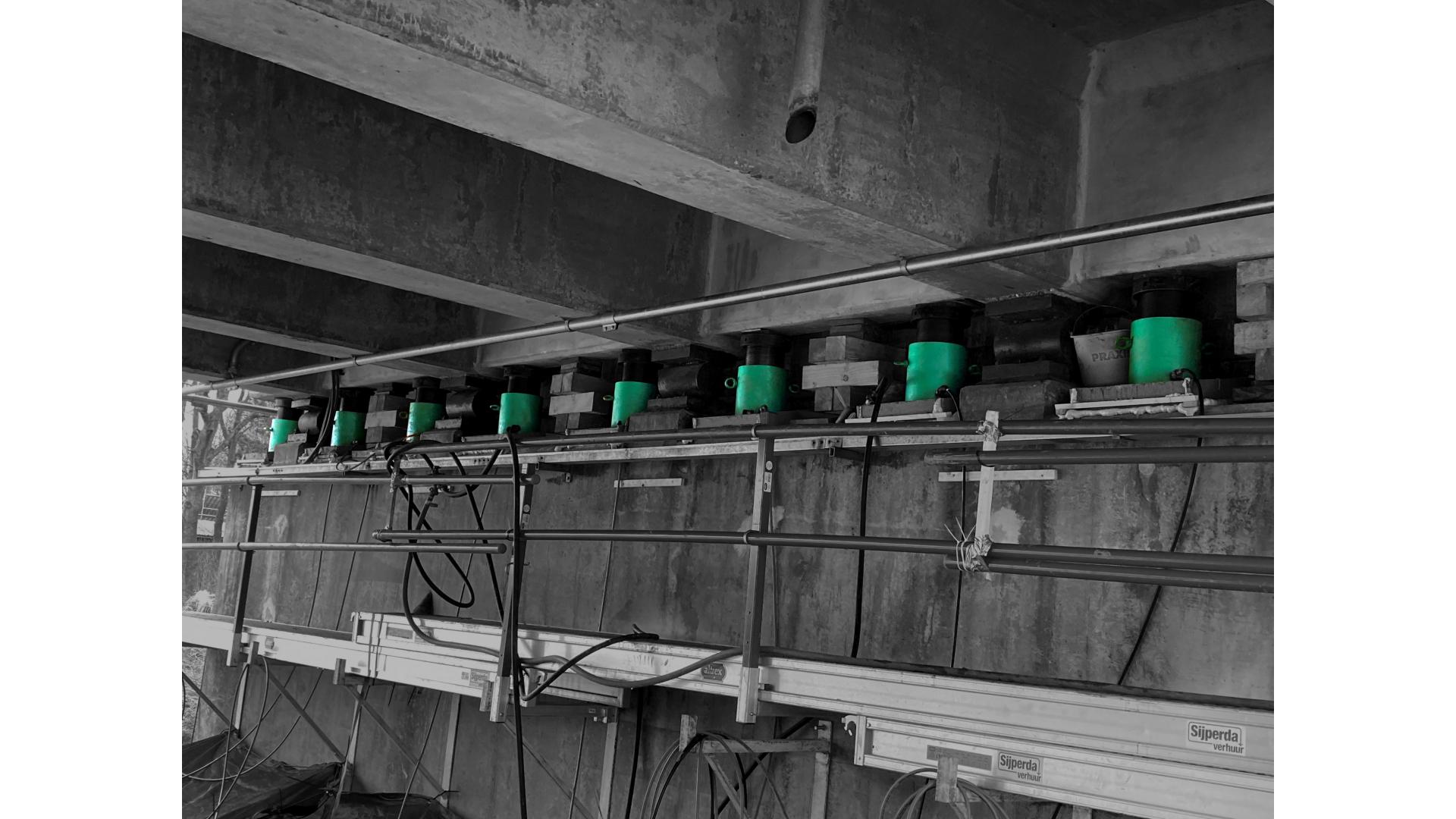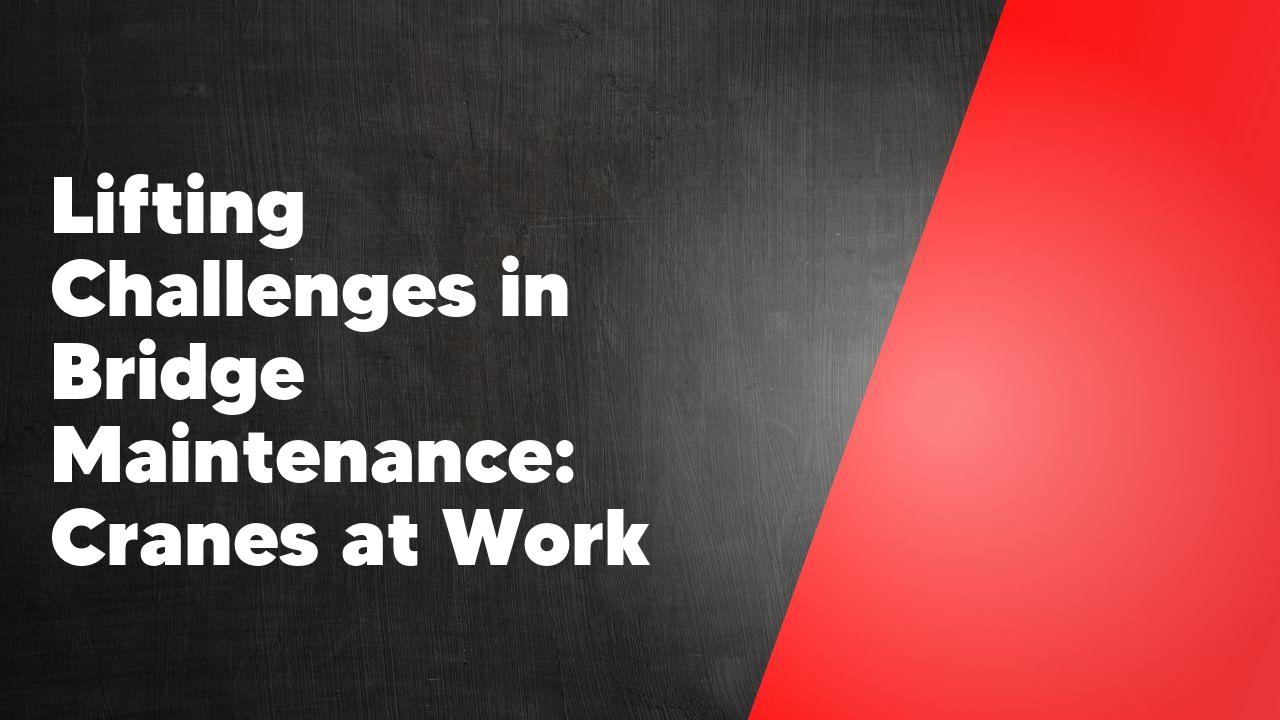Bridge maintenance is a crucial aspect of ensuring the safety and functionality of these vital structures. However, it is not without its challenges, particularly when it comes to lifting heavy loads during maintenance operations. In this article, we will explore the various challenges faced in bridge maintenance and how cranes are being used to overcome them.
The Importance of Bridge Maintenance: Ensuring Safety and Longevity
Bridge maintenance is crucial for ensuring the safety and longevity of these vital structures. Bridges are subjected to constant wear and tear from heavy traffic, weather conditions, and other factors. Regular maintenance helps identify and address any structural issues before they become major problems. This includes inspecting and repairing any cracks, corrosion, or damage to the bridge components. By maintaining bridges, we can prevent accidents and ensure the safety of the people who rely on these structures every day. Additionally, proper maintenance extends the lifespan of bridges, saving money on costly repairs or replacements in the long run.
The Role of Cranes in Bridge Maintenance: A Powerful Solution

Cranes play a crucial role in bridge maintenance, providing a powerful solution for various tasks. These versatile machines are capable of lifting heavy loads, making them ideal for tasks such as replacing damaged bridge components or conducting routine inspections. With their ability to reach high elevations, cranes enable workers to access hard-to-reach areas of the bridge, ensuring thorough maintenance and repairs. Additionally, cranes offer stability and precision, allowing for precise positioning of materials and equipment. This not only enhances safety but also increases efficiency in bridge maintenance operations. Overall, cranes are an indispensable tool in the maintenance and upkeep of bridges, ensuring their longevity and safety for years to come.
Overcoming Challenges in Bridge Maintenance: How Cranes Can Help
Bridge maintenance is a critical aspect of ensuring the safety and longevity of these vital structures. However, it is not without its challenges. One of the key obstacles faced in bridge maintenance is the difficulty of accessing certain areas of the bridge. This is where cranes can play a crucial role. With their ability to lift heavy loads and reach great heights, cranes can provide the necessary support for workers to access hard-to-reach areas of the bridge for inspection, repair, and maintenance. Additionally, cranes can also assist in the transportation of materials and equipment, making the overall maintenance process more efficient and effective. By utilizing cranes, bridge maintenance teams can overcome these challenges and ensure the continued safety and functionality of our bridges.
Types of Cranes Used in Bridge Maintenance: A Closer Look
There are several types of cranes that are commonly used in bridge maintenance. One of the most common types is the mobile crane, which is versatile and can be easily transported to different locations. These cranes are often used for tasks such as lifting heavy materials or equipment onto the bridge. Another type of crane that is commonly used is the tower crane, which is typically used for larger bridge maintenance projects. These cranes are stationary and have a high lifting capacity, making them ideal for tasks such as installing large bridge components. Overall, the use of cranes in bridge maintenance is essential for ensuring the safety and functionality of these important structures.
Safety Considerations in Bridge Maintenance: Best Practices for Crane Operations
When it comes to bridge maintenance, safety should always be the top priority. Crane operations play a crucial role in this process, and it is essential to follow best practices to ensure the safety of workers and the integrity of the bridge. One important consideration is the selection of the right crane for the job. The crane should have the appropriate lifting capacity and reach to handle the specific tasks involved in bridge maintenance. Additionally, proper training and certification of crane operators are vital to ensure they have the necessary skills and knowledge to operate the equipment safely. Regular inspections and maintenance of the crane are also necessary to identify any potential issues and prevent accidents. By following these best practices, bridge maintenance teams can minimize risks and ensure the successful completion of their projects.
Future Innovations in Bridge Maintenance: Advancements in Crane Technology
Advancements in crane technology are set to revolutionize bridge maintenance in the future. These innovations will greatly improve efficiency and safety in the maintenance and repair of bridges. One such advancement is the development of autonomous cranes that can operate without human intervention. These cranes will be equipped with advanced sensors and artificial intelligence capabilities, allowing them to detect and assess the condition of bridges, identify areas that require maintenance, and perform the necessary repairs. This will eliminate the need for human workers to physically inspect and repair bridges, reducing the risk of accidents and improving overall efficiency. Additionally, these autonomous cranes will be able to work around the clock, ensuring that bridge maintenance can be carried out more quickly and effectively. Overall, the future of bridge maintenance looks promising with the integration of advanced crane technology.
Conclusion
In conclusion, cranes play a crucial role in bridge maintenance by providing the necessary lifting capabilities to tackle various challenges. They enable workers to safely and efficiently carry out inspections, repairs, and replacements on bridges of all sizes. With advancements in technology and the use of specialized cranes, the future of bridge maintenance looks promising, ensuring the longevity and safety of these vital structures.
What are the common challenges in bridge maintenance?
Common challenges in bridge maintenance include limited access to the bridge, heavy traffic flow, structural deterioration, and the need for specialized equipment.
How do cranes help in bridge maintenance?
Cranes are used in bridge maintenance to lift heavy materials and equipment, provide access to hard-to-reach areas, and assist in the construction and repair of bridge components.
What types of cranes are commonly used in bridge maintenance?
Common types of cranes used in bridge maintenance include mobile cranes, tower cranes, gantry cranes, and floating cranes.
Are there any safety considerations when using cranes in bridge maintenance?
Yes, safety is a crucial aspect when using cranes in bridge maintenance. It is important to ensure proper training and certification of crane operators, conduct regular inspections and maintenance of the cranes, and follow all safety protocols and guidelines.
How long does it take to complete bridge maintenance using cranes?
The duration of bridge maintenance using cranes can vary depending on the scope of work, size of the bridge, and other factors. It is best to consult with a professional contractor to get an accurate estimate for a specific project.
Can cranes be used for bridge maintenance in all weather conditions?
Cranes can be used for bridge maintenance in most weather conditions, but extreme weather conditions such as strong winds, heavy rain, or snowstorms may pose safety risks and require temporary suspension of crane operations.

